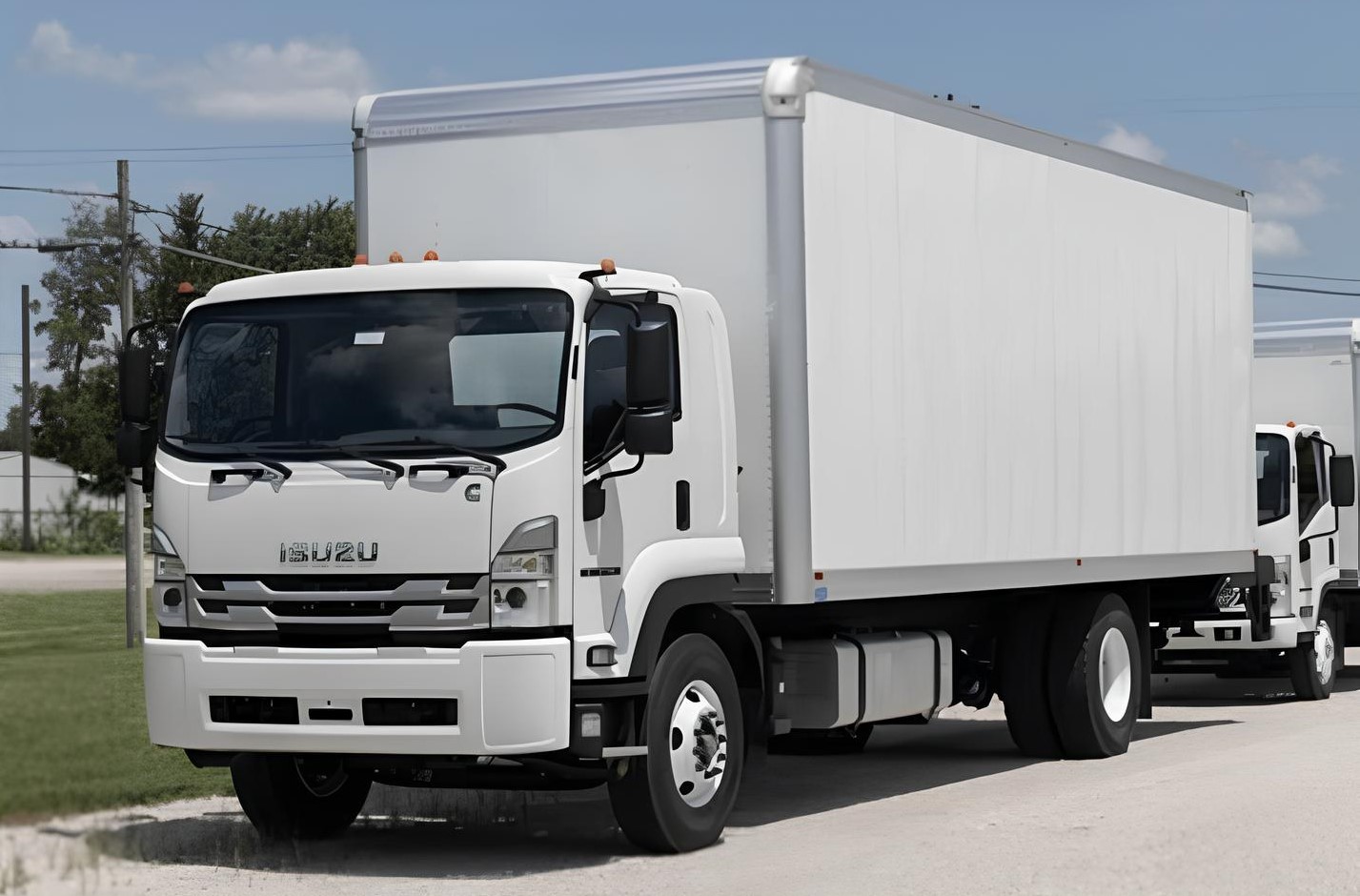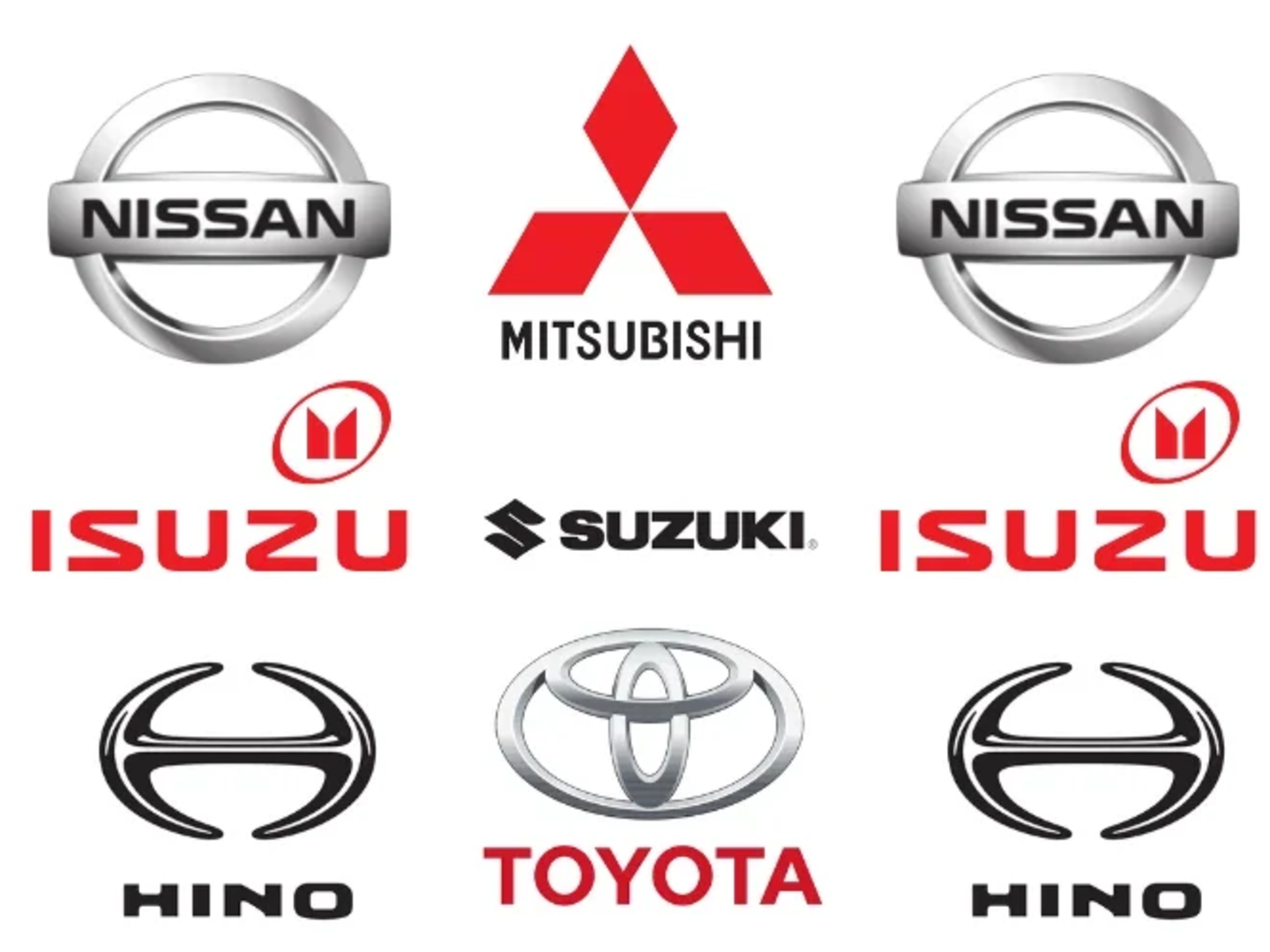Introduction
So, you’re thinking about getting yourself or your company a new Japanese box truck, or maybe a used truck.
However, nowadays, in the global market, these box trucks come in all sorts of shapes, types, and sizes, which can sometimes be a bit overwhelming.
However, in this article, we’re going to help you determine which Japanese box truck is going to offer the best bang for the buck, whether you want to move locally sometimes or haul large items on a regular basis.
What is a box truck?
A box truck is a versatile commercial vehicle equipped with an enclosed cargo area resembling a box-like structure which is called a box body that ensures secure and weather-resistant transportation of various goods.

Thanks to this body structure, these trucks can be an essential asset for businesses and individuals engaged in delivery, moving services, and more.
The distinct configuration comprises a driver’s cabin at the front and a separate enclosed cargo compartment at the back, safeguarding items during transit.
General Specifications of box trucks
When it comes to the length, most of the times it will be 10 – 26 feet as they generally have two axles. However, these dimensions will indeed depend on the make and model of the truck.
The following figure demonstrates the general values for their maximum length, width and height.

- Max Length: 40′- 60′ (State regulated)
- Max Width: 8′ 6″- 9′ (Federal CMV regulation)
- Max Height: 13′- 15′ (State regulated)
When it comes to their payload capacity it is based on gross vehicle weight ratings (GVWR) which refers to the maximum weight at which the truck can safely operate and is set by the Federal Highway Commission, US Census Bureau, and US Department of Energy.
The following figure demonstrates the maximum load capacity of different types of box trucks.
| Box Truck Class | Box Truck Type | Max Load Capacity -lbs. |
|---|---|---|
| 4 | Small Walk-In Trucks | 7250 |
| 5 | Small Delivery Trucks, Walk-In Trucks | 8700 |
| 6 | Standard Delivery Trucks, Large Walk-In Trucks | 11500 |
| 7 | Beverage Trucks, Large Delivery Trucks | 18500 |
| 8 | Heavy-Duty Box Trucks | 54000 |
Uses of Box Trucks:
- Goods Transportation: One of the primary purposes of box body trucks is to transport various types of goods; most commonly, furniture, appliances, electronics, construction materials, and more. The enclosed cargo space protects the goods from bad environmental conditions and provides security during transportation.
- Commercial Delivery: Many companies use box trucks for local and regional delivery services. These trucks are often used in delivering packages, merchandise, and supplies to businesses, retailers, and consumers.
- Moving Services: Moving companies often rely on box trucks to help people relocate their homes or offices. The enclosed cargo space allows for safe and organized transport of belongings, reducing the risk of damage during the move.
- Construction and Trades: Contractors and tradespeople use box trucks to carry tools, equipment, and materials to job sites. The enclosed cargo area keeps valuable tools secure and protected, while providing a convenient workspace for tasks that require shelter.
- Mobile Business: Some entrepreneurs even convert box trucks into mobile businesses, such as food trucks, mobile boutiques, or service stations customizing the box truck’s exterior and interior to suit the specific needs of their business.
Why choose a Japanese box truck?

In the realm of medium-heavy duty box body trucks, Japanese manufacturers have established themselves as pioneers of innovation, and their trucks truly stand out with exceptional craftsmanship and innovative engineering which facilitate superior performance and durability of their vehicles.
Just like their other truck variants, these Japanese box trucks are meticulously designed to optimize fuel efficiency, reduce emissions, and provide ergonomic driver comfort for the user.
With a reputation for precision engineering, Japanese manufacturers prioritize safety features, ensuring a secure and smooth journey for both drivers and transported cargo and, this commitment to quality makes Japanese box body truck a preferred choice among many truck users working in the industries mentioned before.
Top 5 Japanese Box Truck Models in 2025
As the transportation industry evolves, these top 5 Japanese box truck models in 2025 continue to lead the way, catering to the diverse needs of various businesses.
This comprehensive guide explores each model’s unique features, benefits, and how they’re reshaping the future of transportation and logistics.
Isuzu F-Series
Introducing the Isuzu F-Series, a prime example of Class 6 medium-heavy duty trucks. At its core is the robust 5.2L diesel engine that propels the Isuzu FTR.
The technical synergy between this powerplant and the Allison 2550RDS automatic gearbox results in a harmonized system that effortlessly handles transportation and towing tasks with a maximum GVWR of 30,000 pounds.
Delving into the specifications, the Isuzu FTR box truck boasts a formidable 215 horsepower and an impressive 520 lb.-ft of torque at 1,600 rpm, establishing an outstanding foundation for performance. This configuration offers notable power-to-weight ratios for various applications.
The model’s adaptability is underscored by its 8 wheelbase configurations, accommodating body lengths spanning from 14 to 30 feet.
Additionally, this particular Japanese box truck exhibits its hauling capability with a maximum payload capacity of 15,690 pounds, redefining its role in the transportation landscape.
Isuzu N-Series
The Isuzu N-Series stands as a testament to precision engineering, designed for optimal reliability and fuel efficiency, particularly suited for urban operations.
The focal point is the Isuzu NPR, driven by either a 5.2L turbocharged diesel engine or a 6.0L V8 gas engine, both of which align harmoniously with the vehicle’s intended purpose.
Incorporating technical versatility, the Isuzu NPR box trucks provides an array of wheelbase options, ranging from 10 to 20 feet. This adaptability allows for seamless integration of varied body configurations, catering to diverse operational requirements.
Beyond this, the model is available in standard and crew cab variants, each meticulously crafted to fulfill distinct seating needs while maintaining the vehicle’s maneuverability.
Nissan UD
Nissan UD stands as another notable contender in the realm of Japanese box trucks, offering a diverse array of models tailored to various needs.
The lineup encompasses different models, each boasting distinctive bed sizes, hauling capacities, and engine specifications.
From the compact yet capable Nissan UD 1200 to the robust Nissan UD 2600, these trucks cater to a wide spectrum of cargo requirements. Engine options vary across the range, with powerplants optimized for efficiency and performance.
The Nissan UD models are recognized for their precision engineering, ensuring reliable operation and adaptable maneuverability in diverse urban and suburban environments.
Hino box trucks
The Hino 155 and 195 models, engineered under the precision of Hino Motors, a subsidiary of Toyota, encapsulate the essence of precision engineering seamlessly combined with performance excellence.
The Hino 155, with its 6-speed automatic transmission and 5L turbo diesel engine, presents a well-calibrated union that offers versatility through multiple wheelbase lengths, making it apt for both single and double cab configurations.
Expanding on this performance paradigm, the Hino 195 Cab-over, equipped with identical transmission and engine attributes, delivers augmented medium-duty capacities.
Notably, this model achieves a Gross Vehicle Weight Rating (GVWR) of 19,500 pounds, underscoring its prowess in the medium-heavy duty segment.
Mitsubishi FUSO Fighter
The Mitsubishi FUSO Fighter series showcases innovation and practicality in the world of box trucks. Its design blends dynamic aesthetics with fuel efficiency, embodying FUSO’s dedication to top-notch performance, efficiency, and versatility.
At the core of the Fighter’s capabilities are several robust engine options, including turbocharged diesel engines with capacities ranging from 5.1L to 7.5L. These engines cater to diverse operational needs while prioritizing fuel efficiency and emissions control.
The Fighter’s cargo box, meticulously crafted for streamlined loading and unloading, offers ample space to accommodate various cargo sizes and types.

This adaptability positions the Fighter as a versatile solution for a wide range of transportation requirements. Innovative technologies further enhance safety and efficiency, contributing to an improved driving experience.
Before you purchase…
Having closely observed the evolution of these top Japanese box truck models, it’s evident that their blend of engineering excellence and innovative design is reshaping the landscape of commercial transportation.
These models offer a holistic solution, considering performance, efficiency, and driver comfort. However, before making a purchase,
Do your homework!
Before you hand over a good chunk of change make sure you understand what features you will be getting and whether they match your specific requirements. For instance, you can go through the following checklist and confirm you get exactly what you want.
- Price tag
- Towing and hauling capabilities
- Body Length and width
- Cab Style and size
- Transmission
- Load Capacity
- Interior lighting
- Floor type
- Specs for dock delivery (rear door type, chassis wheel size)
Have a plan for what you’ll be hauling.
When purchasing a Japanese box truck, take into account the types of freight you’ll be transporting frequently.

For instance…
Carrying plastic toys is one thing; moving heavy stones on pallets is quite another. Make sure you understand the term of commercial driving.
In the second scenario, you might require a vehicle with a higher GVWR and, most likely, a load that fits your box truck’s dimensions. If the load appears to be heavier, the driver of the truck might also require a commercial driver’s license.
Additionally, remember that the type of freight will affect the type of chassis, the type of rear door, and the type of floor, temperature and lighting you need within the box.
Conclusion
In a rapidly evolving commercial transportation landscape, these top 5 Japanese box truck models in 2025 exemplify the fusion of innovation, efficiency, and reliability.
Each model brings its unique strengths to the table, catering to a wide range of hauling needs. Nonetheless, as businesses seek to optimize their logistics, these top Japanese box trucks offer a compelling solution that truly embodies the future of transportation.
You may also like,




